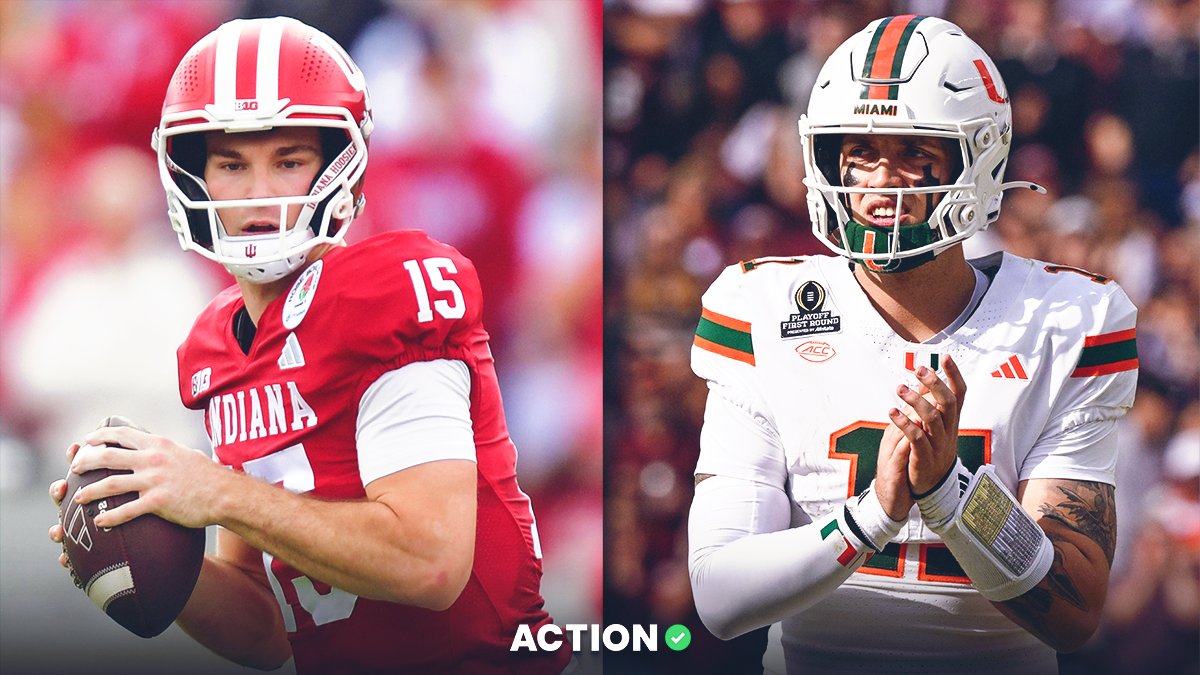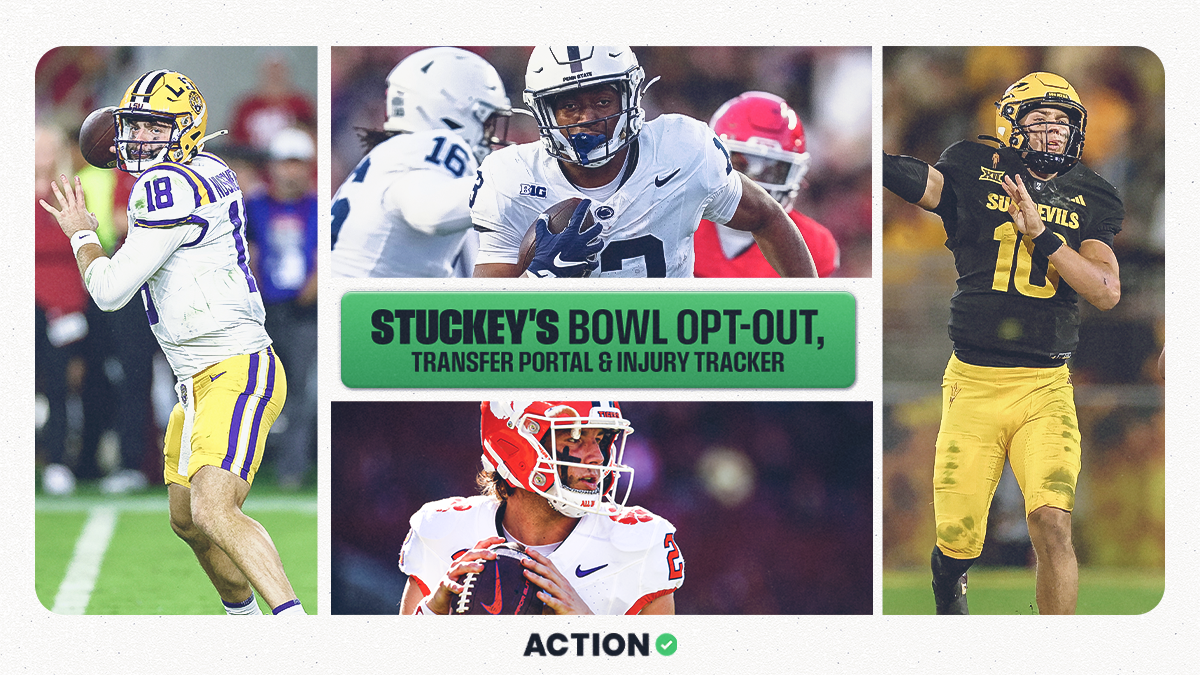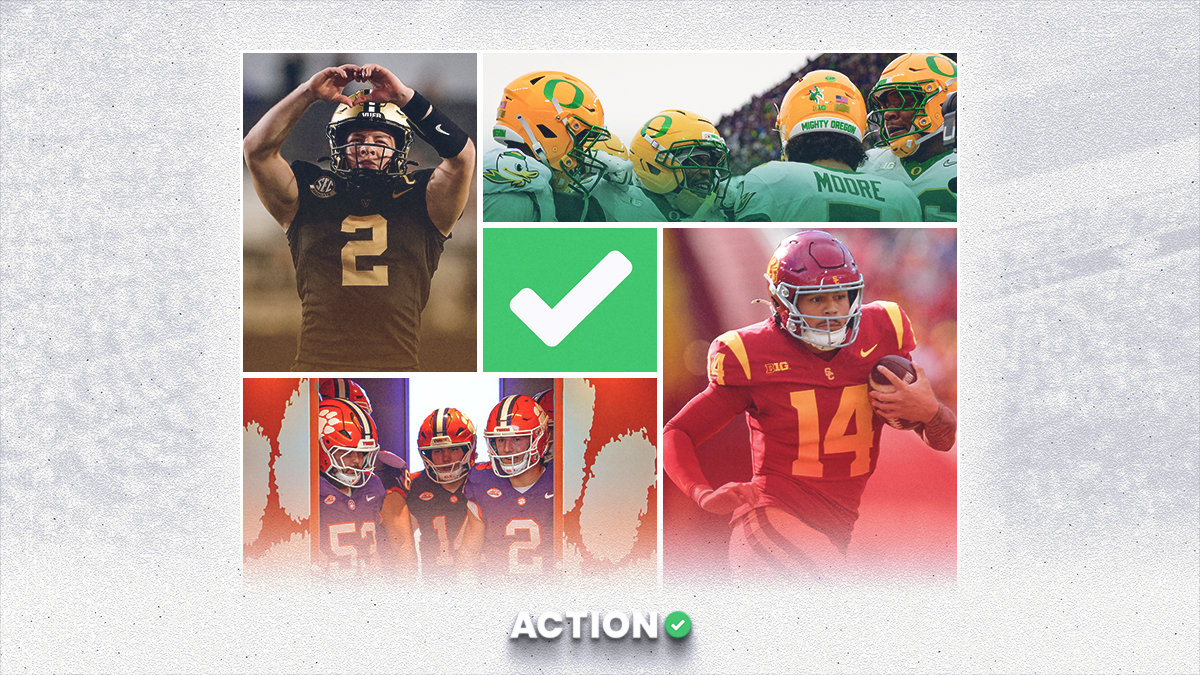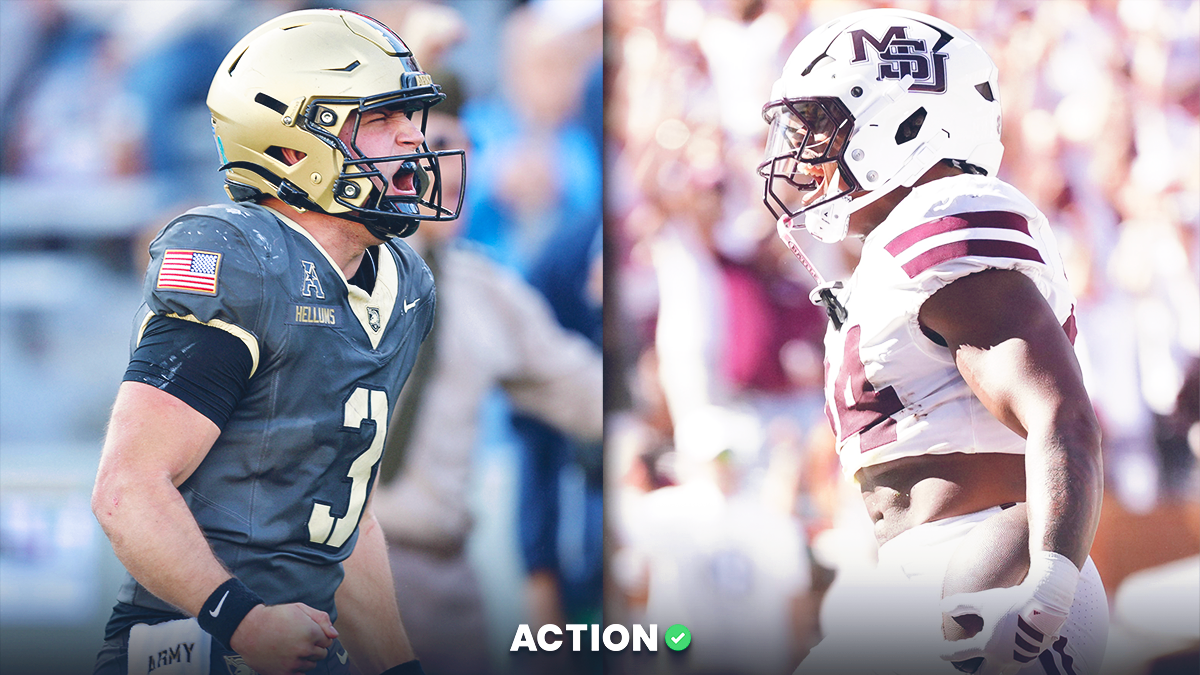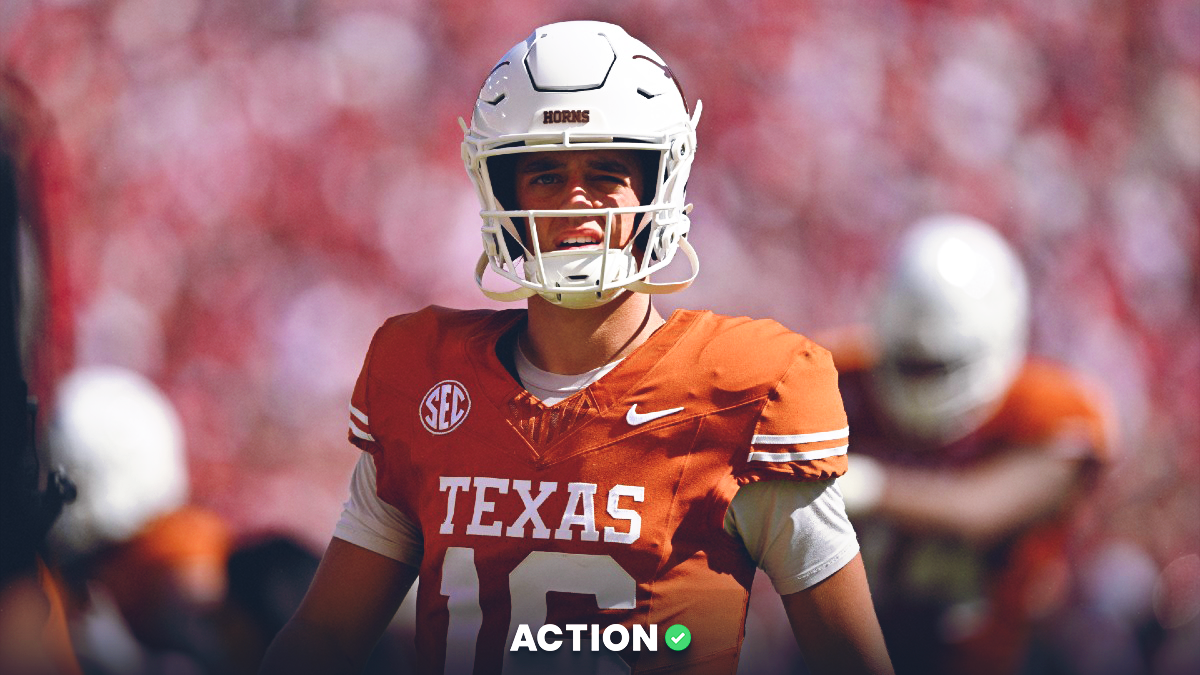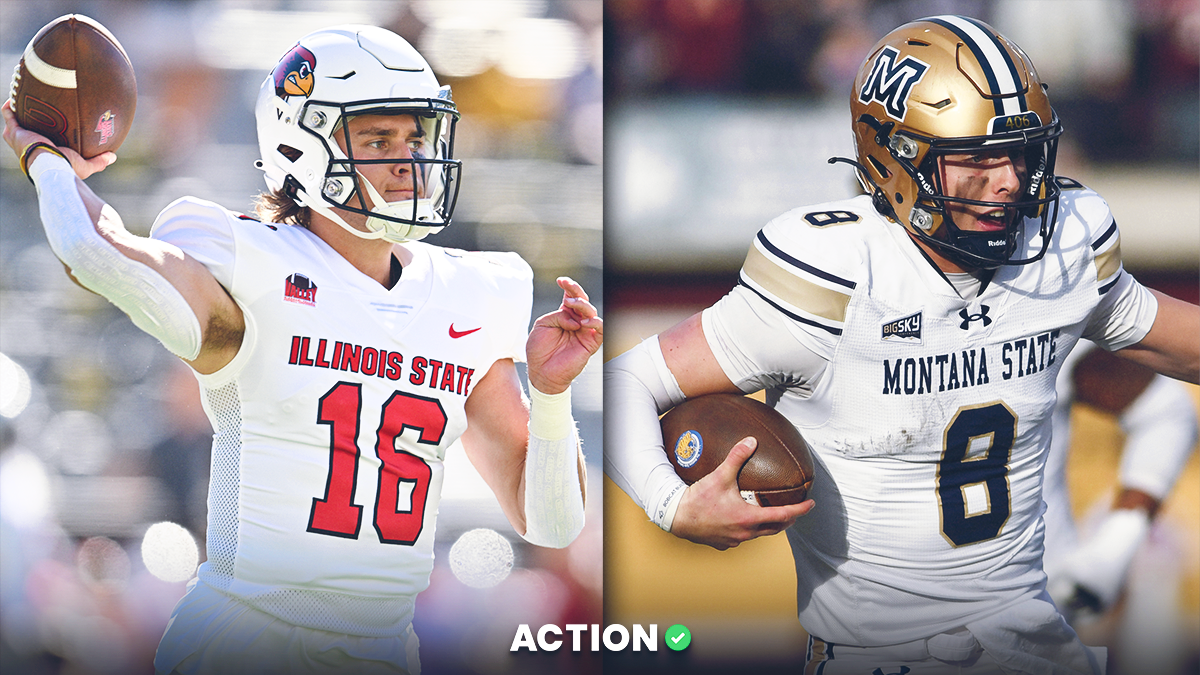
DraftKings Promo Code: New $300 Bonus for Miami vs. Ole Miss Fiesta Bowl, NFL

BetMGM Bonus Code TOPACTION: $1,500 Bonus for CFP Semifinals, NFL Wild Card Weekend
NCAAF Betting Garners Mainstream Attention
If the NFL is the king of American sports betting, college football is the prince. Every fall, millions of fans across the country tune in not just to watch, but to bet on NCAAF games. With the ongoing legalization of mobile sports betting in more states, college football wagering is only set to grow. While some states restrict bets on local teams, this hasn’t slowed the overall expansion of the college football betting market.
Before placing a wager, check out our college football betting game guides to get started.
At Action Network, we provide everything a college football bettor could need — from team news and injury updates to detailed betting odds and promo codes for popular legal online sportsbooks.
NCAAF Team News & Odds
Never miss an update about your favorite NCAAF team with the Action Network's detailed team pages. From breaking news, player stats, and injury reports to weekly college football betting odds breakdowns and sportsbook promo codes, we've got you covered.
Weekly NCAAF Odds
Whether you care about a specific team or you're just interested in the weekly betting slate, our college football odds table will help you shop lines across the most popular sportsbooks to get the best edge possible. Easily filter between betting markets to get data for only what you care about.
NCAAF Futures Odds
Interested in predicting the College Football Playoff winner or conference champions? Futures bets are determined later in the season and can be highly rewarding. Here are some examples of what Action Network tracks:
- Team futures for the season
- Individual award odds
- Conference and championship outcomes
NCAAF Futures — Check here for future odds on every aspect of the 2025-26 season
Expert NCAAF Picks
Get expert analysis on challenging matchups. Our NCAAF betting pros provide picks on spreads, moneylines, prop bets, and more. Whether you’re a new bettor or a seasoned veteran, these insights help guide your decisions.
NCAAF Public Betting
Data-driven bettors benefit from our public betting insights, which track both the percentage of bets and the percentage of money on each game. This helps identify where professional bettors—often called “sharp money”—are placing their wagers, potentially boosting your chances of making smart bets.
NCAAF Public Betting Data
NCAAF Against the Spread (ATS) Records
Spreads are the most popular college football bet, but they can be difficult to beat. By analyzing team performance against the spread over the course of the season, you can make more informed betting decisions backed by hard data.
NCAAF ATS Data
NCAAF Injury Report
Injuries always play a significant role in any NCAAF season. The loss of key players can dramatically alter a team's prospect for winning a college football game. Not only that, but the absence of stars on the field will also impact a game's odds. Seasoned bettors know to scour the injury reports before making a wager to ensure that their selection is one that takes into account who might be missing from the field in a given contest.
PRO Analysis
In addition to all of the NCAAF information available to users on the Action Network for free, we have also created our PRO tools that take our betting analyses a step further. Our experts will track best odds across books, top trends for individual contests, as well as grading picks based on all available signals so that users can feel an extra level of confidence before placing a wager.
State Betting Guides
While legalized sports betting has been gaining momentum across the United States, it still has a long way to go before being permitted in most states. Action Network is meticulously tracking all legislation efforts across each state in order to provide detailed updates to users. Be sure to check our pages regularly for updates in your area if you live in a location where online sports betting is not yet legal.
Best NCAAF Sportsbooks
Finding the right sportsbook can be challenging. Depending on what your primary interest is with NCAAF betting, there are a multitude of choices to fit your preferences. The Action Network has created detailed sportsbook reviews for a variety of the most popular books in the country to help you understand exactly what to expect before signing up. We've also partnered with many of these sportsbooks to provide new users with some of the best activation codes in the industry! Read our bet365 bonus code, Fanatics Sportsbook promo, BetRivers promo code, and Caesars Sportsbook Promo Code reviews to get started!
Looking for something a little different? Check out our Kalshi referral code for a CFTC-regulated platform for financial prediction markets!
Betting Education
NCAAF betting is hard enough as it is. Don't do yourself a disservice by not having all the vital betting information necessary to make an informed decision. We have compiled a hub of educational resources to help get you up to speed on everything you need to know to improve your chances of making a smart NCAAF bet. From beginner information to more complex strategy options, we can guide you through your sports betting journey.


